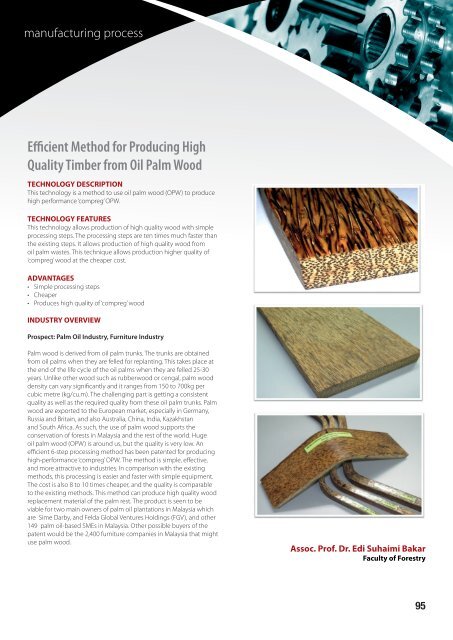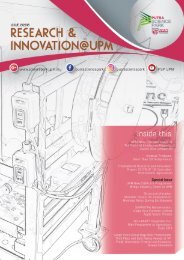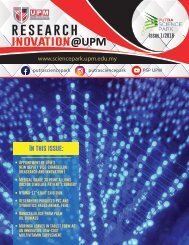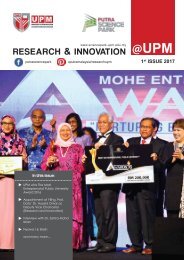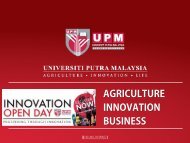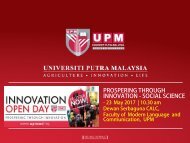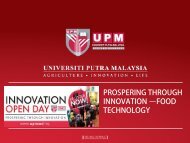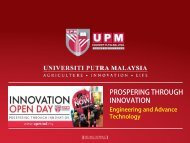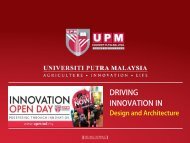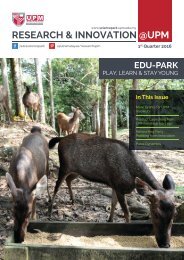Innovation directory 4th edition
Create successful ePaper yourself
Turn your PDF publications into a flip-book with our unique Google optimized e-Paper software.
manufacturing process<br />
Efficient Method for Producing High<br />
Quality Timber from Oil Palm Wood<br />
TECHNOLOGY DESCRIPTION<br />
This technology is a method to use oil palm wood (OPW) to produce<br />
high performance ‘compreg’ OPW.<br />
TECHNOLOGY FEATURES<br />
This technology allows production of high quality wood with simple<br />
processing steps. The processing steps are ten times much faster than<br />
the existing steps. It allows production of high quality wood from<br />
oil palm wastes. This technique allows production higher quality of<br />
‘compreg’ wood at the cheaper cost.<br />
ADVANTAGES<br />
• Simple processing steps<br />
• Cheaper<br />
• Produces high quality of ‘compreg’ wood<br />
INDUSTRY OVERVIEW<br />
Prospect: Palm Oil Industry, Furniture Industry<br />
Palm wood is derived from oil palm trunks. The trunks are obtained<br />
from oil palms when they are felled for replanting. This takes place at<br />
the end of the life cycle of the oil palms when they are felled 25-30<br />
years. Unlike other wood such as rubberwood or cengal, palm wood<br />
density can vary significantly and it ranges from 150 to 700kg per<br />
cubic metre (kg/cu.m). The challenging part is getting a consistent<br />
quality as well as the required quality from these oil palm trunks. Palm<br />
wood are exported to the European market, especially in Germany,<br />
Russia and Britain, and also Australia, China, India, Kazakhstan<br />
and South Africa. As such, the use of palm wood supports the<br />
conservation of forests in Malaysia and the rest of the world. Huge<br />
oil palm wood (OPW) is around us, but the quality is very low. An<br />
efficient 6-step processing method has been patented for producing<br />
high-performance ‘compreg’ OPW. The method is simple, effective,<br />
and more attractive to industries. In comparison with the existing<br />
methods, this processing is easier and faster with simple equipment.<br />
The cost is also 8 to 10 times cheaper, and the quality is comparable<br />
to the existing methods. This method can produce high quality wood<br />
replacement material of the palm rest. The product is seen to be<br />
viable for two main owners of palm oil plantations in Malaysia which<br />
are Sime Darby, and Felda Global Ventures Holdings (FGV), and other<br />
149 palm oil-based SMEs in Malaysia. Other possible buyers of the<br />
patent would be the 2,400 furniture companies in Malaysia that might<br />
use palm wood.<br />
Assoc. Prof. Dr. Edi Suhaimi Bakar<br />
Faculty of Forestry<br />
95


